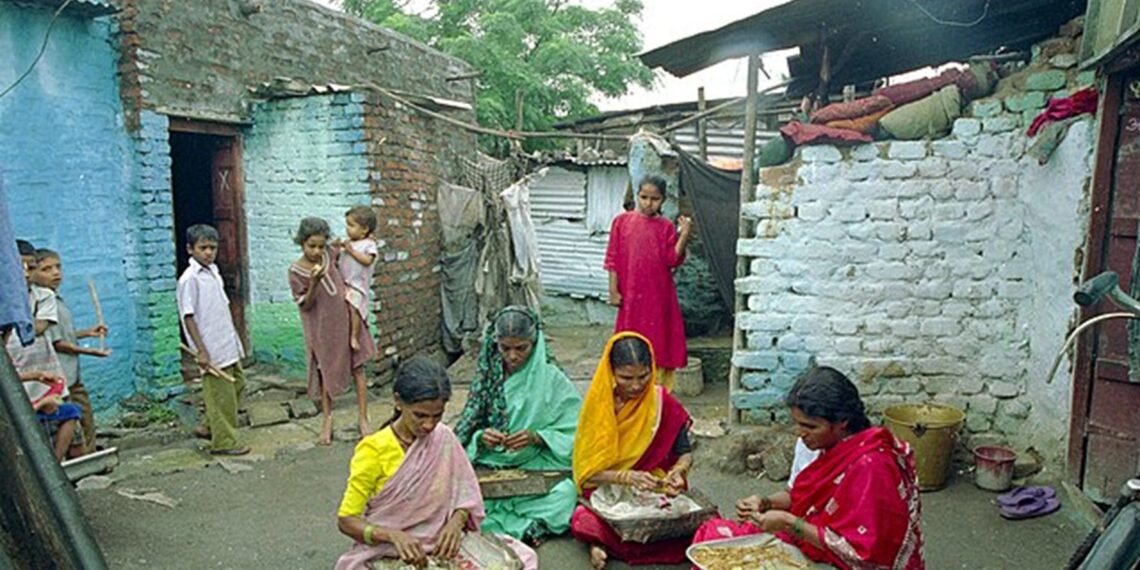By Debajit Palit and Mini Govindan
Managing energy services such as electricity are widely recognised as a driver of women’s empowerment in India.
These include initiatives aimed at inclusivity such as the appointment of ‘Mahila Vidyut Sahayaks’ or women trained to handle electricity poles and for theft detection of cables and transformers by the Maharashtra State Electricity Distribution Company.
Similarly, the Madhya Pradesh Paschim Kshetra Vidyut Vitran Company has created a ‘pink electricity zone’ managed entirely by women to oversee electricity supply operations.
However, gender mainstreaming—including women’s and men’s perspectives, needs and experiences in policies, programmes and decisions—remains largely absent in India’s electricity sector. Understanding mechanisms of empowerment is crucial to effectively integrate gender perspectives into the energy sector for equitable outcomes.
Women’s empowerment indicates an increase in economic, social and political strength, boosting self-esteem, enlarging decision-making power, and providing better access to resources. For India, a gender-inclusive energy transition will not only advance equity but also contribute to India becoming a self-reliant nation by 2047.
This year also marks the 30th year of the Beijing Declaration and Platform for Action, a landmark agreement that sets a comprehensive framework for women’s empowerment and gender equality.
Defining women’s empowerment
Women’s empowerment is broadly defined as the process through which women take ownership of their lives by expanding their choices, a dynamic process that can be measured using a resources, agency and achievements framework.
Resources encompass human, social and material factors that serve as the foundation for empowerment. Agency refers to an individual’s ability to make decisions and act on issues that concern them, enabling them to fulfil their aspirations. Achievements signify the tangible and non-tangible outcomes of empowerment.
The authors’ research undertaken for the International Network on Gender and Sustainable Energy (ENERGIA) explored the multifaceted relationship between electricity access and women’s empowerment.
While electricity undeniably improved women’s lives by reducing drudgery, increasing productivity and employment opportunities, the study found limited evidence that household-level electricity provisioning significantly strengthened women’s decision-making power.
Women who get jobs in electricity services feel economically empowered. Yet the broader impact on gender relations remains unclear without a deeper insight into their ability to influence household decisions.
Gender-blind policies to gender-responsive outcomes
A review of India’s electricity sector using a gender lens highlighted a critical gap between policy intent and actual outcome. While policies claim to be gender-neutral, their impact is often gender-blind, failing to account for baseline disparities between men and women.
A key reason for this is the assumption that benefits will automatically trickle down to all individuals equally, without addressing structural inequalities. Programmes such as Pradhan Mantri Ujjwala Yojana or Saubhagya have improved women’s access to energy by providing connections in their names. However, they primarily focus on alleviating caregiving—such as reduced time spent on meal preparation, household chores and childcare—rather than enabling women’s active participation in energy value chains and entrepreneurial ventures.
Our analysis suggests that while policies can initiate empowerment, their long-term impact depends on accompanying social structures and the shared values, resources and networks used by individuals and social groups to achieve their goals. Understanding the conditions that translate well-intended gender-inclusive policies into tangible outcomes is essential for advancing empowerment and equity.
If policies follow a top-down approach without deeper consultations with women stakeholders, they often fail to address structural inequalities. However, a demand–driven approach shaped by the specific needs and realities of different gender groups can ensure that policies are transformative rather than merely symbolic.
Women’s participation in decision-making
Initiatives such as the State Rural Livelihood Programmes in Bihar and Uttar Pradesh and energy business entrepreneurship efforts in Rajasthan and Maharashtra have actively engaged women-led Self-Help Groups in the sales and servicing of distributed solar products.
These programmes offer women platforms to voice their needs and concerns and serve as stepping stones toward gender equality by challenging energy sector patriarchy and encouraging women to take on decision-making roles in operating, managing or owning energy enterprises.
However, a deeper analysis reveals that while these initiatives have enhanced women’s social interactions, facilitated children’s education and improved women’s decision-making roles in specific areas such as accessing microcredit or earning through employment and micro-businesses, they have not necessarily resulted in women’s empowerment in a comprehensive way.
The primary limitation stems from entrenched societal structures, where major household decisions continue to be made by men.
Bridging the gap between policy and practice requires robust monitoring mechanisms to ensure meaningful gender inclusion rather than superficial improvements. Tracking investments, measuring progress on gender- specific targets and documenting challenges can help identify whether policies truly empower women or merely reinforce existing inequalities.
Without monitoring and measures to anticipate and prevent emerging harms, decision-making often remains male dominated, limiting the transformative impact of gender policies. By establishing accountability frameworks, policymakers can evaluate whether resources are equitably distributed and whether women actively participate in shaping outcomes. These mechanisms ensure that policies are not just gender inclusive in theory but result in tangible shifts in power dynamics, creating lasting empowerment.
Targeted interventions can significantly advance gender inclusion in the energy and entrepreneurship sectors. Women-friendly loan products and financial instruments can provide essential capital for home-based enterprises, enabling women to establish and expand their businesses.
Additionally, technology solutions designed for ease of use by women such as solar product assembly, small-scale harvesting and post-harvest technologies can create new economic opportunities for women.
These innovations both enhance productivity and empower women to participate more actively across value chains. Furthermore, specialised skill development programmes (both technical and managerial) tailored for women, combined with affirmative measures, can strengthen women’s participation, economic endowments and leadership opportunities.
Gendered electricity policies and support services
Organisations working to enhance women’s participation in the energy supply chain, decision-making and empowerment often encounter challenges stemming from deep-rooted social norms and gender relations. Due to constrained timelines and limited budgets, they struggle to comprehensively address these systemic barriers.
Electricity alone cannot transform gender dynamics. The electricity sector, like other sectors, is shaped by broader social policies and programmes that define gender roles and relations. Achieving gender equity requires long-term socio-cultural changes, legal reforms, increased awareness and access to gainful employment, all of which contribute to lasting empowerment for women.
Developing affirmative gender-focused policies and programmes can ensure greater women’s participation and decision-making in the organisation and management of electricity supply. Equally important is the strengthening of procedures and implementation frameworks to translate these policies into effective, tangible outcomes on ground.
Beyond policy reforms, achieving long-term gender inclusivity may require transforming social norms and traditions which limit women’s participation. Creating an enabling environment for women’s leadership and entrepreneurship will be pivotal as India progresses towards Viksit Bharat, a future built on inclusivity, equity and sustainable development.
Dr. Debajit Palit is Centre Head, Centre for Climate Change and Energy Transition at Chintan Research Foundation.
Dr. Mini Govindan is Senior Fellow at The Energy & Resources Institute (TERI).
Originally published under Creative Commons by 360info™.















